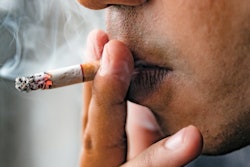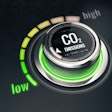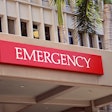
New guidelines issued last year on who should get CT lung cancer screening nearly doubled the number of people eligible for the scans. But that doesn't necessarily mean they will get them, due to healthcare disparities, according to a study published July 24 in Cancer Medicine.
Many Black individuals may not be able to get access to CT lung screening due to demographic factors like lacking access to transportation and appointment wait times -- despite the fact that they are now eligible for screening, wrote a team led by Kristin Maki, PhD, of the University of Texas MD Anderson Cancer Center in Houston.
"Our results suggest that despite increasing the number of Black individuals who are eligible for lung cancer screening, the 2021 USPSTF recommendation highlights ongoing socioeconomic disparities that need to be addressed to ensure equitable access," the group wrote.
Last year, the U.S. Preventive Services Task Force (USPSTF) updated its lung cancer screening recommendation, lowering the age of eligibility from 55 to 50 and adjusting smoking history from 30 pack years to 20 pack years. The change was an attempt to expand the screening eligibility pool, particularly to include more Black Americans, and it immediately prompted debate on whether the attempt was effective -- with some arguing that it is and others arguing that it isn't.
In yet another exploration of the issue, Maki and colleagues used data from the 2015 National Health Interview Survey to investigate the impact of the USPSTF 2021 lung cancer screening eligibility criteria on racial disparities between Black and white people, tracking factors such as education and socioeconomic level and employment and insurance status. The team also assessed individuals' use of preventive care and reasons for delayed medical care.
The study included data from those who would have been eligible for CT lung cancer screening according to the USPSTF's 2013 recommendation. The authors found that the 2021 update had a dramatic effect on expanding the eligibility pool, in line with previous studies: The number of eligible individuals grew from 7.9 million under the 2013 guidelines to 14.2 million under the 2021 recommendation, a relative increase of 81.4%.
Under the 2021 guidance, the proportion of eligibility expanded for all racial and ethnic groups except white individuals; the share of women eligible for screening also grew.
| Eligibility for CT lung cancer screening by race and sex, by year of USPSTF recommendation | ||
| Factor | 2013 | 2021 |
| Non-Hispanic white | 87.0% | 83.7% |
| Non-Hispanic Black | 6.9% | 7.7% |
| Hispanic | 3.5% | 4.1% |
| Non-Hispanic Asian | 2% | 3.7% |
| Males | 57.5% | 55.4% |
| Females | 42.5% | 44.6% |
But despite expanding the pool of eligibility, the 2021 recommendation doesn't make healthcare disparity between Black and white individuals disappear.
For example, Black patients were more likely to report of lack transportation to a medical site compared with their white counterparts (11.1% vs. 3.6%); could not get an appointment soon enough (10.5% compared with 6.6%); and that the wait in the office was too long (10.4% vs. 4.9%).
"The 2021 USPSTF recommendation update will dramatically increase the number of adults in the U.S. who are eligible for lung cancer screening, yet this may not address drivers of inequities related to lung cancer screening," the authors explained.
How can these disparities be mitigated? Maki's group offered a number of ideas.
"Increasing accessibility through mobile clinics, telehealth, and other innovations in care delivery may help to reduce some barriers to screening," the team concluded. "At the patient level, integrating patient navigators, interventions to address health literacy, and efforts to reduce medical mistrust may help in reducing barriers to screening and improving lung cancer outcomes among minority populations."





















